Barkur-on-line Team’ always tries to show-case the best Barkurian ethos and cultural diversity, and every effort is made so is our wish to capture the entire spectrum of Barkur’s vibrant colors. One such effort in line is the below chronology of great events involving our Barkur, over the centuries, which is prepared based on the following records and books published from time to time.
It may also be notified to our valued readers that, any missing mile-stones left out, not intentionally by us, shall be brought to our notice. Surely this is not a full-proof, all inclusive documents, on the contrary, a beginning to stimulate our fellow Barkurian’s, other well-wishers to contribute further, to improve and make it more authentic. Any clarification, further details can be provided to our anxious readers upon request.
At times different research historians given contradictory versions of one given event and we expect our viewers to derive their conclusions once having fair view of the whole text of the referred documents.
Our sincere thanks and gratitudes to each and every learned author and friends who co-operated with us to compile these few facts..
- South Indian Inscriptions Vols. vii – viii.
- Ancient Karnataka, Vol. 1, History of Tuluva – by Dr.B.A.Salethore
- Tulu Nadu – the land and its People – Neria Harish Hebbar.
- Milagrian 1981 - Milagres Church Kallianpur Down the Centuries – Charles E.G.Lewis
- Dr. P.Gururaja Bhat – Milagres College library archives.
- Dakhshina Kannada Zilleya Prachina Ithihasa by Ganapathi Rao. Igal – 06-02-1922.
- Tuluva History and Culture – by Dr. P.Gururaja Bhat 1975.
- A History of South Kanara by Dr.K.V.Ramesh – 1970.
- Dr. A.Sunder – some extracts.
- Dr.B.Vasantha Shetty – Study of Temples at Barkur - former Principal SMS College Brahmmavar.
- www.karnataka Britannica
- Silver Jubilee Memorial Souvenir – NHSS Barkur – 1971.
- Dr. Suryakant U.Kamat – Concise History of Karnataka. 2001.
- Few extracts from Barakuru Mahatme.
- ICYM Barkur Silver Jubilee Souvenir 2002.
- Itihasdalli Barakuru – B.S.Poojary – SPA souvenir.
- Bhutala Pandya Charitam – a Sanskrit Book of 13 chapters.
- History of South India by Dr. Neealakanta Shastry.
- Apostolic Christianity in Kallianpur – Charles E.G.Lewis.
- Konkanachem Christ-aunponn – Rev. DR. H.O.Mascarenhus
- A land called South Kanara – 2000- by William Pais & Vincent Mendonca
- www.barkuronline
- Udayavani Kannada Daily- Deepavali Special Volume.
- Times News Network 27/02/03.
- Deccan Herald News paper. - A report on Excavation work.
- Saptahika Puravani Udayavani Daily dated 21-06-06 by Udaya Achar / Harsharaj K.
- History of Mangalore Diocese and some extracts from Raknno Konkanni weekly.
- Kallinapurada Aithihasika Hinnale – by Dr. Neri Carnelio – Milagres High school Golden Jubilee Souvenir .2006.
- Udupipages.com
- Desanthar Zaun Bhandadek – Rev. Dr. Fedelis Pinto.
- Pedruchi Chavi – parish bulletin
- Milagres church 325- Souvenir 2006 – An article by Dr. Neri Carnelio / Prof. Hilda Rodrigues.
Down Memory lane – Barkur
Legends and folklore
Legend has it that the Coastal Karnataka as ‘Parashurama Shrashti’
Emperor Asoka the Great, 250 B.C. refers the place in his pillar edicts as ‘Satyaputra’
As per Bhutala Pandya Charitam – A Sanskrit book with 13 chapters - Bhutala Pandya’s rule begins at 77 A.D. in Barkur.
As per legends some believe St Bartholomew one of the Apostles of Jesus Christ landed near Barkur around 50AD together with St. Thomas, hence name Tonse for the place near Kallianpur – Kemmannu. (And returned to Asia Minor in 77 AD.) Thomas moves to South to Kerala and then to Eastern Coast of Tamil Nadu and preached Christianity over there and suffers martyrdom.
An article written on papyrus leaves, in Greek language states a ship belonging to Greece got drowned near Malpe – Barkur harbor in 2nd Century AD due to storm.
Tradition says that there was a talismanic throne belonging to King Vikramaditya buried at Barkur, on which the Princes of Anagundi’s sat once a year, to ensure good fortune.
Aliya Santhana – rule to inherit family property by Matrilineal Inheritance starts - especially in Bunts and Jain communities – believed to be introduced first by King Bhutala Pandya. (Some argue this system was started about 500 years ago.)
A Greek reference in 2nd Century AD call the place ‘Olokhoira’ abstract of ‘Aluvakheda’
Only estuary where two Rivers Seeta and Suvarna becomes one at Hungarkatta and then embrace Arabian Sea was a natural harbor for all seasons, as per ancient time’s Western records of Egyptian / Roman and Greek civilization.
Pandyan’s rule comes to an end, as per Bhutala Pandya Charitam, after seven generations totaling 259 years in 336 A.D.
Legend also had it that Saint Hazrat Malik Dinar of Trivancore, Kerala, visited Barkur in 646 AD and believed to have laid the foundation for the first Mosque in the un-divided DK and Udupi District, at Barkur.
Land marks of Written / recorded / proved part of history of Barkur.
Kadamba’s of Banavasi come to power in the year 350 AD and consolidates their authority over Tulunadu in the 5th Century. The region was very thinly populated at that time and most of the places unexplored, except some habitation on river banks.
Alupa Dynasty starts its rule of Tulu Nadu. – 8th Century – 694 – 1325 AD
They were primarily feudatory to various kingdoms ruled Karnataka. Alupa’s maintained marital relations with their overlords over the centuries.
The Alupa Clan:
Aluvarasa (early 7th century) father–in-law of Pulakeshi – II
Gunga Sagara – 660- 663
Chitra Vahana – 663 – 730 – brother-in-law of Chalukya Vijayaditya.
Alu varasa II, incurred the wrath of the Chalukyas
Chitravahana II
Ranasagara
Pratvi Sagara
Marama
Vimaladitya
Alva Rananjaya
Dattalupa
Kunda Verma
Jaya Simha
Banki Deva
Patti Odeya
Pandya Patti Odeya – 1080 – 1110
Kavi Alupendra
Kula Shekara - 1160-1220.
Kundana- 1220-1230
Vallabha Deva Dattalupa
Vira Pandya – 1250- 1275
Queen Balla Mahadevi & Naga Devarasa – 1275 – 1285
Banki Deva II
Soyee Deva
Kula Shekara 1335- 1346 – son of Hoysala Veera Ballala and Alupa Princess Chkkayi Thai
Banki Deva III
Kula Shekara III- 1355- 1390
Vira pandya II
They make Barkur their political capital, 11th Century, earlier it was at Mangalore then to Udyavar, followed by Barkur over a period of some 400 odd years and again back to Mangalore.
Shankaracharya of Kaladi, Kerala, visits Barkur on his way to Kollur in 8th Century AD
Jainism was at its peak at Barkur probably with royal patronage in 8th Century AD.
Rashtrakoota of Malekheda dynasty was in power – 754 – 973 AD. in Karnataka, they were just overlords and local Alupas were the rulers.
An epigraph traced at Hosala assigned to 9th Century first record the name of the place as Barakanuru.
Rashtrakoota King Krishna II – conquers Tulu Nadu / Tuluva Kheda around 900 AD and appoints Indappaya as Governor.
AD 1010 – 1020 Cholas attack Tulu Nadu - Son of Chola Emperor Raja Raja Chola, Prince Rajendra Chola stays at Barkur for few days – Cholara Keri near Chauli Kere a place to commemorate this historical event.
Alupa King Banki Deva – 1020 – 1050 get back the kingdom from Cholas.
First the name Barahakanyapura applied to the place in 1070, during the reign of Alupa Dattalavendra Shree Mara, who had his royal palace at present Shinhasana Gudde known as Periyara Mane.
Chalukyas of Kalyan – come to power – Emperor Vikrmaditya VI defeats Alupa King in the year 1076 – 77.
Chalukya Kings had authority over the region but local Alupa Kings were independent in administration.
Hoysala Kings were ruling most part of Karnataka -1140 – 1336 as Dwara Samudra their Capital since Hoysala’s were Jains, it is said, and Alupa’s too might have embraced Jainism and built Basadi’s at Barkur.
Once Hoysala King Vishnu Vardhana – 1117 – 1140 embraced Vaishnava religion, Hindu temples also built at Barkur, by the local Alupa rulers.
Alupa Kings make Barkur as their Capital and commercial hub in 10 - 11th Century AD and continues till end of 14th Century AD.
It is said, there were 365 Temples in Barkur. Most of the present day temples and large tanks were constructed during 13 – 16th Centuries – among others the following are very important. One can visibly see the multiple influence of Chola, Chalukya, Hoysala and Vijaya Nagara art and architecture.
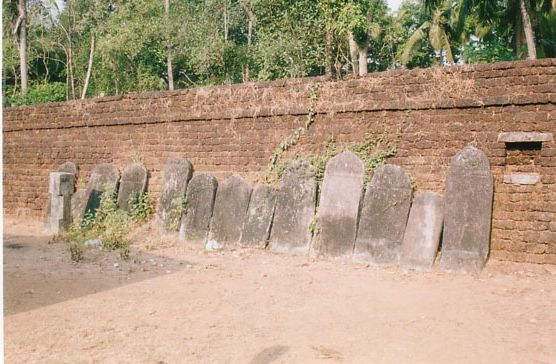
- Somanatheshwara Temple of Moodu Keri (10th Century AD, with pre-Hoysala images of Saraswathi and Janardana in its navaranga)
- Siddeshwara Temple at Manigara Keri
- Batte Vinayaka Temple near Kote Kere
- Panchalingeshwara Temple at Kote Kere – temple royal for Alupa rulers.
- Maha Ganapapathi Temple of Chauli Kere
- Venu Gopala Krishna of Moodu Keri- the main idol is of black stone.
- Mahishasura Temple, 12th Century AD
- Kalikambha Temple – 14th Century AD, famous for annual deepotsava.
1333 – Hoysala king Veera Ballala plan to attack Tulu empire – Alupa king Soyee Deva Alupendra receives him with honour and Hoysala king Veera Ballala - marries Alupa princess Chikkayi Thai and she rules Barkuru Rajya.
Most of the Jain Basadi’s at Barkur were constructed and existing got renovated by Alupa and Jain Hoysala rulers.
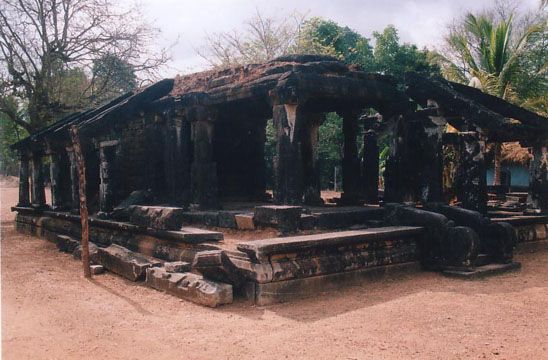
Hoysala King Veera Ballala, dies in a battle at Madhurai 1336 and the vacant Barkur throne was occupied by his wife Chikkai Thai.
She constructs Wooden Bridge connecting ‘Barkur – Benne Kudru’.
Ibna Batoot a Western traveler, Pais, and Nuneez refers Barkur as Pakanur in their various travelogue Books dating 1335 - 1345, as a modern, well planned, prosperous city and business centre.
Madhavacharya builds eight monasteries and Shree Krishna Temple – in Udupi in 13th Century and the Bhandarakeri Mutt at Barkur around same period.
He preaches Tatva Veda or Vaishnnava Siddantnta, as per some scholars influenced by Christian philosophy, and joins his Guru Badarayana in the Himalayas in 1317.
Barkur prospers in the hands of Vijaya Nagara dynasty – 1336 – 1664, almost 350 long years. This period is rightly marked as Golden Age of Barkur province.
Stanapathi Chikkanna was the local chairman during 1406, directly under the Vijaya Nagara Kings. At this time Barkur port was commercial hub of Western Coast. Horses were imported from Arabia by Sea.
Chandarasa Odeya was the Governor of Barakuru Rajya in the year 1431.and Devadana Nayaka in 1452, and Lakkana Dhanayaka in1463
Barkur was the Provincial Capital of Hoysalas, and reach its peak during Vijaya Nagara rule being Gate way of Business to African, Afghanistan, Asia Minor, Greek and Roman Empire and Egypt.
The Second spacious and well planned Fort at Barkur, near NJC was constructed by Vijaya Nagara King - Harihara I - 1336- 1350.
In 1420, Nicola–Di-Conti an Italian traveler visits Barkur, refers the City as Pacamoria as one of the best known place and city of his time, in his book written in Latin then translated into Portuguese
For administrative convenience Barakuru Rajya was divided into two viz. Mangalooru and Barkur by Vijaya Nagara rulers.
As per written account of Durta Barboza - 1514 a Portuguese traveler – Barkur Sea port was busy with Ships from, East Africa, Malabar, Hormuz, Eden and Egypt.
Emperor Sri Krishna Devaraya – 1509-30 - believed to have paid a visit to Barkur and a Temple and a Tank was built in memory of the landmark. During this time Vijaya Odeya 1518 - and later Timmanna Odeya – 1526 were the Alupa Governors at Barkur
Barkur had a Muncipal Judicial Court, a coin Mint – Gadyana.
Alupa’s Coins – The royal emblem – two fishes on one side and on the other Sri Pandya Dhananjaya, either in Nagari or in Hale Kannada Script.
Later Barkur was under Keladi Kings / Ikkeri Nayaks.
1560- Vijaya Nagara King Sadashiva Raya handovers both Mangaluru and Barakuru Rajya to Ikkeri ruler – Sadashiva Nayaka.
Sri Ranga Raya – 1575 – 1586, He anoints Ikkeri King Sankanna Nayaka as the ruler of Tulu Nadu and Acchhappa Odeya at Barakuru.
In 1608, Ikkeri King Venkatappa Nayaka visits Barkur and records say he ordered to construct forts at Barkur, Kallianpaur etc.to safeguard the natives from constant Portuguese attacks. Tolhars of Suralu, Jain royal family, near Barkur were very close to Ikkeri Kings.
Catholic faith already there in the region since early Christian era, propagated by Apostle Bartholomew, it spread further with the large scale migration of Christians from Goa and majority of them settle down in Coastal Canara, by the end of 15th and in 16th Century and prospers.
Barkur had places of worship for all religions and the visiting merchants from Afghanistan had a shrine dedicated to Ingulla Devi, the only other place in India to have similar temple is Amaravathi in Andhra Pradesh. (It may also be presumed that the place, Petri or Kallianpur probably had its first place of public worship, the Church, much earlier, some centuries ago)
As per an Agreement dated 14th February 1671, between Portuguese and Ikkeri Kings, Portuguese were allowed to open their warehouses at Mangalore, Barkur and Basrur.
Though there were clues of early Christian inhabitance in the area, the present Church at Milagres Kallianpur was found 325 years ago in the year – 1678 as a result of an agreement between Rani Chennamaji – 1672 – 1698 and Portuguese.
In 1721, Barkuru was given as a gift by King Soma Shekara Nayaka to noble Soorappaya.
Haider Ali defeats the Keladi rulers in 1763 and it is also said Barkur got looted, statues and monuments of the past ruined, both Vijaya Nagara fort near NJC and Alupa Palace and fort got badly damaged and valuables in the temples etc. were taken to Mysore, and took over the reigns of Coastal Karnataka; later pass it over to his son Tippu Sultan in 1781.
They further develop business contacts with Arab world in the Middle East and African countries. Local Sea trade got effected by European interference mainly British, French and Portuguese as they fought within themselves for superiority. In one of such battles Barkur became a victim and port got burnt.
Tippu Sultan’s army arrest about 60,000 Christians from Kanara and keep them under captivity at Sri Rangapattanam, on 24th February, 1784 under the pretext that some Christians are hand in glove with British to destabilize Tippu’s authority in the region.
Among others, though old Churches at Barkur, Petre etc were demolished, Milagres was saved miraculously.
‘Barkur Document’ – narrating the atrocities of Tippu Sultan’s forces written down by a noted Barkurian.
Islam already existed in the region was given a boost during the reign of Haider Ali and Tippu Sultan and one more Mosque was constructed at Barkur, believed to be on the ruins of demolished Church in the year 1785. They were primarily navigators and merchants.
‘Tiger of Mysore - Tippu Sultan’ was killed in the year 1799 in the last Battle of Mysore by British.
Christian survivor’s returns to Tulu Nadu, some settle down in Barkur, mainly at Madapady, Halekody and un-explored island (kudru) area but primarily at river shores.
1800 AD - Kanara becomes a part of British Madras Province and the royal status of Barkur ends and Mangalore become close to British hierarchy.
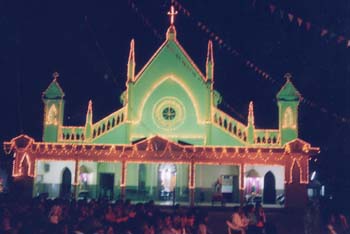
Full fledged independent Barkur Parish was constituted on 29th April 1861, with a resident Priest – Rev. Fr. Cosmos Rebello.
Coastal Canara divided into two in 1860 by British as North Kanara to be a part of Bombay Province and South Kanara under Madras Province. As per Local Board Act 1884, one district board, and 3 taluk boards formed – Kundapur, Uppinangadi and Mangalore for governance.
New English School near Church is the first School at Barkur started by the end of 19th Century.
Local Fund Hospital Barkur starts its service – 1921.
First high School in the region leaving Kundapur and Udupi – Milagres High School Kallianpur in 1931.
St. Peter’s Barkurian Association, Bombay born in the year 1939
Mary knoll Higher Primary school was founded by Rev. Fr. Castelino on 31-05-1940.
Post Independence History of Barkur:
01-11-1950 – Tulu Nadu or South Kanara becomes a Part of Karnataka State as a result of linguistic states.
Town Board become Village panchayat comprising Kachhur, Hosala and Hanehali
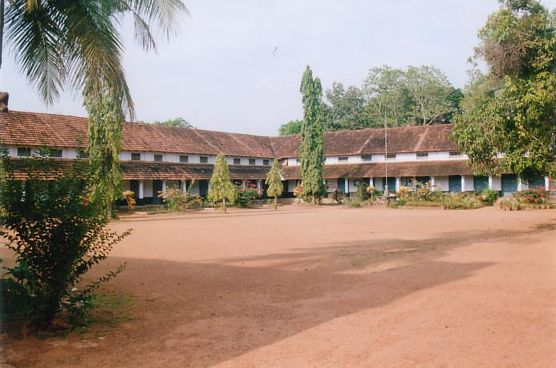
National Higher Secondary School (NHSS) starts, P. N.Bhoja Rao as first HM - at Barkur and first batch comes out in the year 1950.
‘New Belfry to Barkur Church 1962’ - huge bells imported from Germany lures Barkurians irrespective of caste / religion as it serves the town as tower clock- the time wrist watches a luxury.
National Highway, NH 17 was laid, the original plan to pass it via Barkur was dropped alternatively Uppinakote – Mabukal – Airody and was in operation in 1964, and with that virtually the political and commercial importance of Barkur goes down drastically
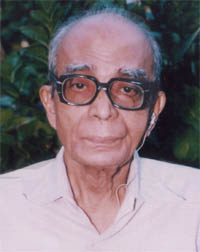
Syndicate Bank opens its branch near Santhe Gudde and Leo D’Almeida as Agent / Manager.
Karnataka Chief Minister Veerendra Patil inaugurates Bridge over river Seeta, for public use in the year 1972.
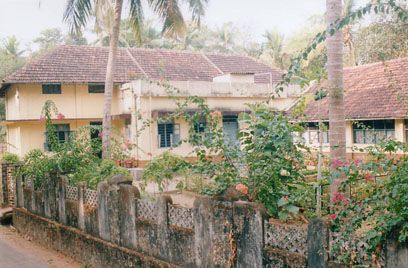
‘Sisters of Charity’ open a Convent at Barkur in 1968 – later to pave the way for the foundation of Mary knoll Girls High School.
As NHSS celebrates Silver Jubilee, in the year 1973, PUC classes first introduced in the re-named National Junior College and B. Seetarama Shetty takes over as first Principal.
Sri Pattabhi Rama Chandra Temple starts celebrating Ganesh Chaturthi on a grand scale every year – 1974.
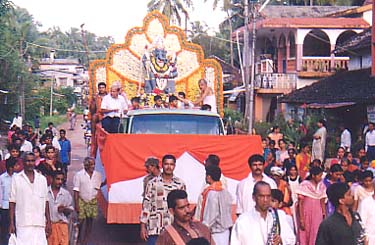
New State assembly seat was carved bifurcating northern parts of Udupi, to constitute ‘Barkur – Brahmmavar’ Constituency in the year 1976.
ICYM (Catholic Youth Movement) take birth on 10th September, 1976 at Barkur Church.
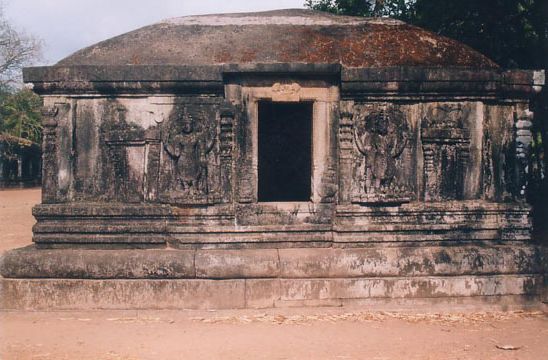
National Archeological Department declares Barkur ‘Katthale Basadi’s’ at Hosala as national monument.
NJC hosts District level Sports Meet of all Junior Colleges January 1977.
S. Basavaraj, of Congress and Dr. B.B.Shetty of Janata party represents the assembly seat for the first three terms in the Karnataka Legislative Assembly.
Famous Billava ‘Hosala Brhamma Baidarkala Garodi’ renovated in the year 1979
‘Hosala Experiment’ becomes a national news – National level adoption programme - Syndicate Bank supports Indira Gandhi’s 20 point programmed for all round progress.
Lions Club – Barkur – Brahmmavar takes birth.
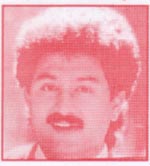
Sunil the superstar of Kannada movies
Ramakrishna – who passes PUC from National Junior College, Barkur in 1982, plunge into Film Industry, later earns a big name as ‘Sunil the superstar of Kannada movies’.
Corporation Bank opens its Branch at Barkur – Kalchapra 1985.
Foundation laid for St. Peter’s Catholic Youth Association Barkur – Bombay on 15th August 1986 and gets inaugurated on 1st Dec, 1986.
New vented dam across Seeta near Neelavara / Bhandimata constructed.
First in the District, famous and historical ‘Malik Dinar Jumma Mosque’ of Barkur gets renovated in 1991-92.
‘Barkur Telephone Exchange’ and revolution in communication - 1994
Udupi – Barkur – Shimogga Road becomes State Highway – 1996.
New spacious Post Office building gets inaugurated for Barkur.
Barkur become an in integral part of newly formed Udupi District in 1998.
National ITI at Heardi Barkur get started.
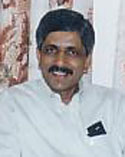
First State Minister Jaya Prakash Hegde - elected from Barkur – Brahmmavar Seat.
Concrete Bridge connecting Barkur – Benne-kudru gets inaugurated.
Foundation of Rotary Club of Barkur.
Govt. First grade College sanctioned for Barkur – Raj Shekhar Hebbar as Principal.
Barkur in the 21st Century:
‘Konkan Railway’ starts passenger operation – at Barkur Station, Kanakona – Mangalore passenger halts.
Matsya-Gandha, Mangalore – Mumbai passenger train give a stop at Barkur Railway Station – 01-07-2002, and facilities at the station improved with the contribution by social minded people and organizations.
‘Barkur-on-line’ a website designed by Kishore Gonsalves gets inaugurated to unite Barkurian’s around the world at a common place on 19th December, 2001
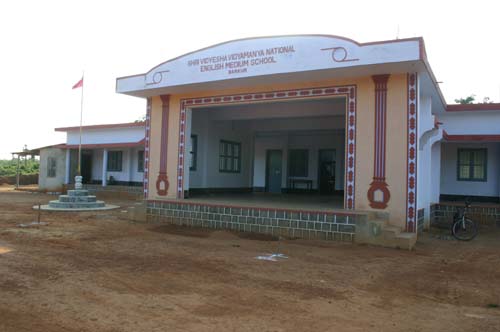
Shri Vidyamanya Vidyadeesha English Medium High School, at Heradi - Barkur takes birth on the spot donated by Sri Bhandara keri Mutt, Barkur.
‘Rupnnim’ a collection of Konkani Short stories by Kishore Gonsalves won the Karnataka State Konkanni Sahithya Academy Award - 2001
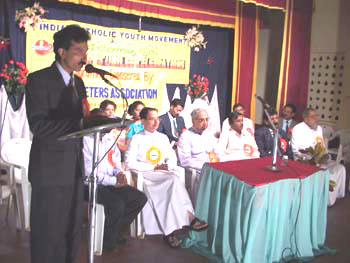
ICYM Barkur celebrates Silver Jubilee in the year 2002, on a grand scale.
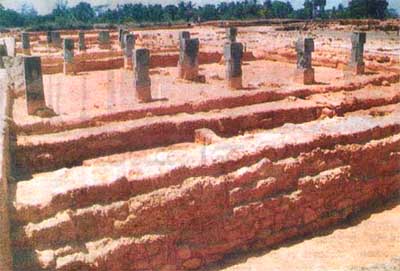
Excavation starts at ‘Vijaya Nagara Fort’ near NJC Barkur in 2003 by M.H. Krishna Indology Unit and Archeological Survey of Karnataka State. ( ASI)
‘Karavali Utsava’ – recognizes the historical dominance of Barkur in the District and provides touring facilities during the celebration also document it in brochure.
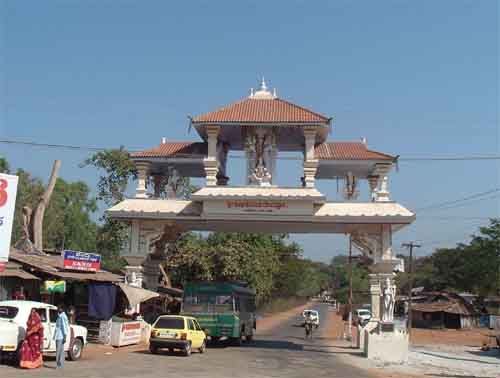
‘Welcome Tower (Arch) to Barkur’ gets ready near Brahmmavar Akashavani Nov - 2003
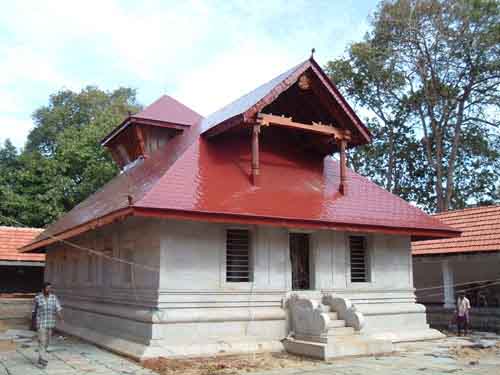
Historical Benne Kudru Garodi sacred for both Mogaveera and Billavas gets a new look with renovation, attracts visitors in thousands all over the district – 17-05-2004.
Babbu Swami & Maldi Devi’s Shrine becomes an important pilgrimage destination and yearly grand scale celebration in January becomes a regular affair.
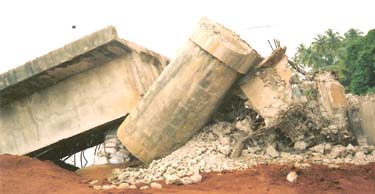
Barkur Bridge collapse on 30-06-2004 and the place once again semi-island for 2 long years.
Kindi anekattu (vented dam) gets inaugurated at Nagermutt across Madisal - tributary Seeta.
Postal Dept. brings out a special co-memorialize Postal Envelope to show case Kal-chapra in particular and Barkur in general 11-02-2006.
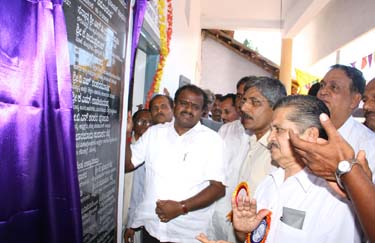
The Chief Minister of Karnataka State inaugurates New College Building and Dr. Gabriel Fernandes Hall on 18-03-2006.
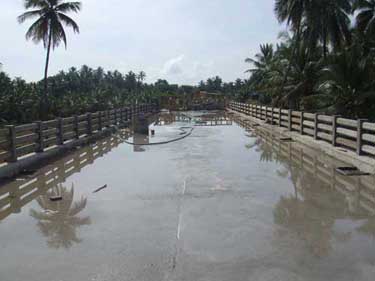
New Bridge over Seeta, gets ready and thrown open for vehicular use on 26-11-2006.
Barkur Punchayat selected as one among 1000 Villages of the State - Suvarna Gramabhivraddhi Scheme, with special financial grant of 2 – 3 Crores, was given a formal start by Revenue Minister of Karnataka State on 6th April, 2007.
Conclusion
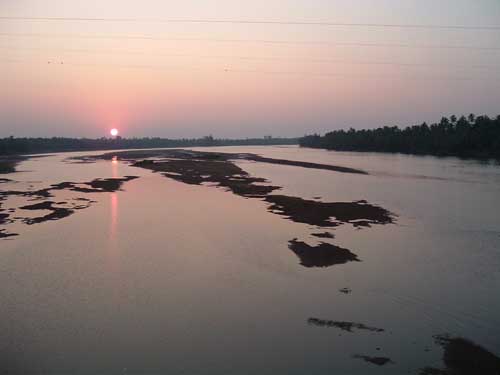
Barkur, a town with lot many places both for pleasure and pilgrimage not given its due respect and recognition in the politico-cultural map of modern Karnataka. It’s the duty of all at the seat of power locally and men who have true concern for the preserving the rich heritage of this historical place to wake up. It’s the call of the hour, to inculcate respect, like and sense of belonging to this city, with the people of Barkur, and removes the tag ‘old and abandoned town of yesterday’ as some describe it.

A beginning is already made as to renovate different places of worship, as devotees throng during festivities in large number, excavation to un-earth the relics of past glory….. but general infra-structure yet to be improved to make the visitor to come again.
These Barkur web pages just above five years on line, happy to be a part of this great legacy and support all and sundries to the cause of its preservation, maintenance and improvement and happy to share the responsibilities to pass on this cultural richness to the next generation.
